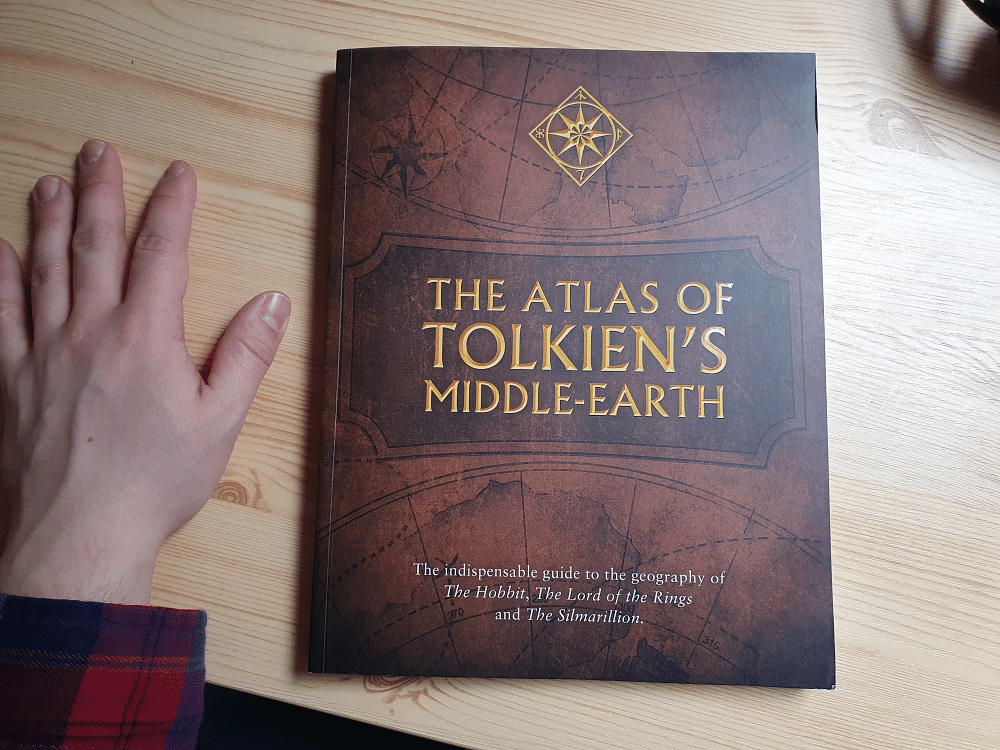

Pages 92 and 93: Lithlad is shown in the south of Mordor rather than the northeast.: Tarnost is shown as a city separate from Ethring though it may be a discarded name for the latter from early drafts.Sackville, shown in the Southfarthing, is entirely invented (compare the Sackville Family). : Hardbottle is shown in the Southfarthing rather than the Northfarthing.In the Unfinished Tales map, Drúwaith Iaur is in the narrow area between the ocean and the southern Ered Nimrais, south of the mouth of the Angren. Pages 39 and 88: On both pages, Drúwaith Iaur is shown north of the Ered Nimrais and south of the Angren, and on page 39 extending east below the Adorn.The Shaping of Middle-earth states that Gabilgathol (Belegost) was "north of the great height of Mount Dolmed". The Silmarillion states that Nogrod was the more southerly of the two. : Nogrod is shown north of Belegost, and both south of Mount Dolmed.Pages 4 and 5: The Grey Mountains are shown in western Haradwaith south of the Great Gulf rather than in the Southlands.Inconsistencies with earlier publications However, a number of these were corrected in the revised edition, as noted below. It was, however, published before the final three volumes of The History of Middle-earth, and thus some maps are based on Tolkien's early works, which were revised in later writings.ĭespite being a thoroughly researched and well-respected reference book, the Atlas is known to contain several errors. In 2001, the publishers issued a reprint of the 1991 revised edition with a new cover (pictured) but identical contents.įonstad also made a bold attempt to fill the gaps by using early conceptual work, mainly from The Book of Lost Tales Part One and the Ambarkanta, combining the later known maps with the sketches used by Tolkien to provide "world maps" of Arda in its entirety and show Aman, Beleriand's position relative to Eriador, and the place of Númenor in the Sea. The book was published in 1981, but in 1991 a revised and updated version was published, which took information from The History of Middle-earth into account. As well, many battles such as those of Beleriand, the Last Alliance and the War of the Ring are illustrated. Discussion includes suggestions as to the geology that could explain various formations, and points that are contradictory between multiple accounts.Ĭity maps and floor plans for important buildings are also included these are very often useful for making sense of the narratives, especially in The Lord of the Rings.

The maps are treated as if they are of real landscapes, and are drawn according to the same rules that a real atlas is drawn: for each area the history of the land is taken into account, as well as geography on a larger scale and from there maps are drawn.


 0 kommentar(er)
0 kommentar(er)
